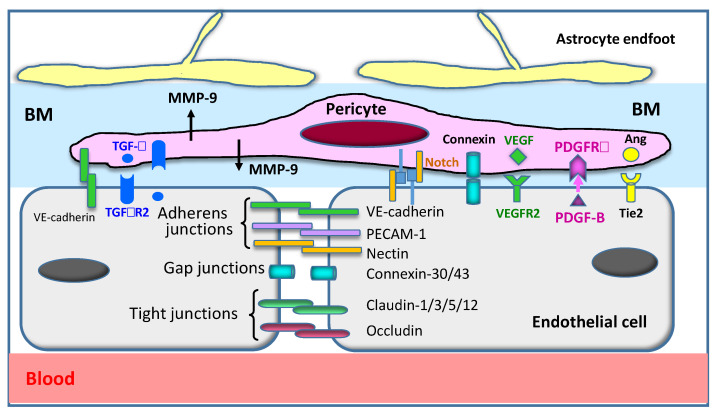Figure 1.
Structure of the blood–brain barrier (BBB). The BBB consists of vascular endothelial cells, pericytes, a basement membrane (BM), and astrocyte endfeet. Cellular components are integrated with many adhesive molecules and are functionally regulated by ligand–receptor systems. The major factors are drawn in this figure. Ang: angiopoietin; BM: basement membrane; MMP-9: matrix metallo proteinase-9; PECAM-1: platelet endothelial cell adhesion molecule-1; PDGF-B: platelet-derived growth factor-B; PDGFRb: platelet-derived growth factor receptor beta; TGF-b: transforming growth factor-b; TGFbR2: Transforming growth factor-b receptor 2; VE-cadherin: vascular endothelial cadherin; VEGF: vascular endothelial growth factor; VEGFR2: vascular endothelial growth factor receptor 2.

